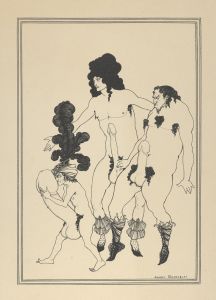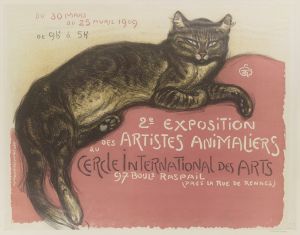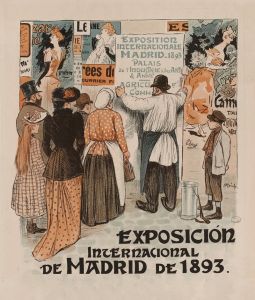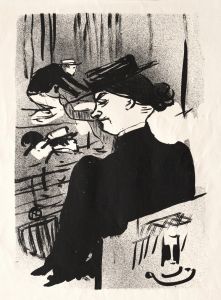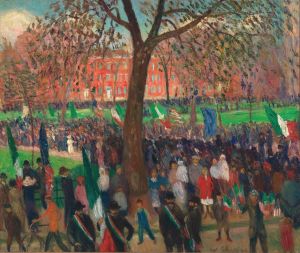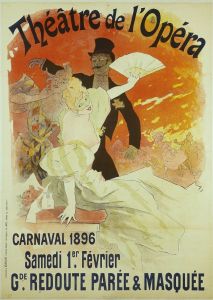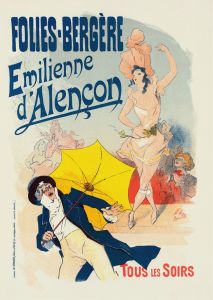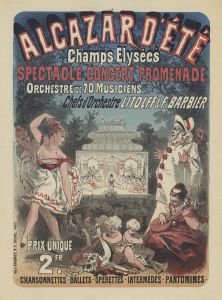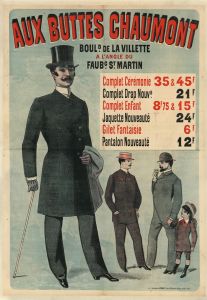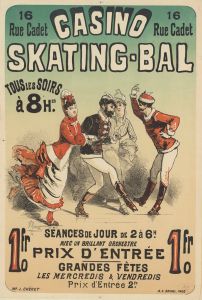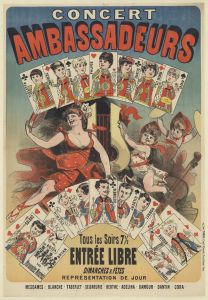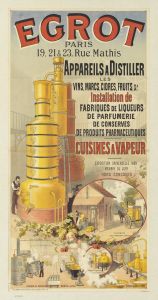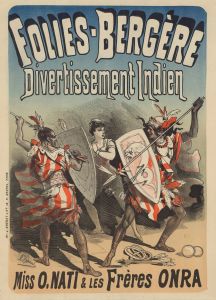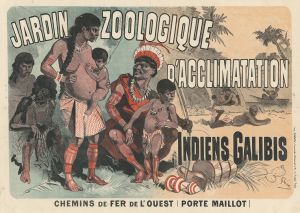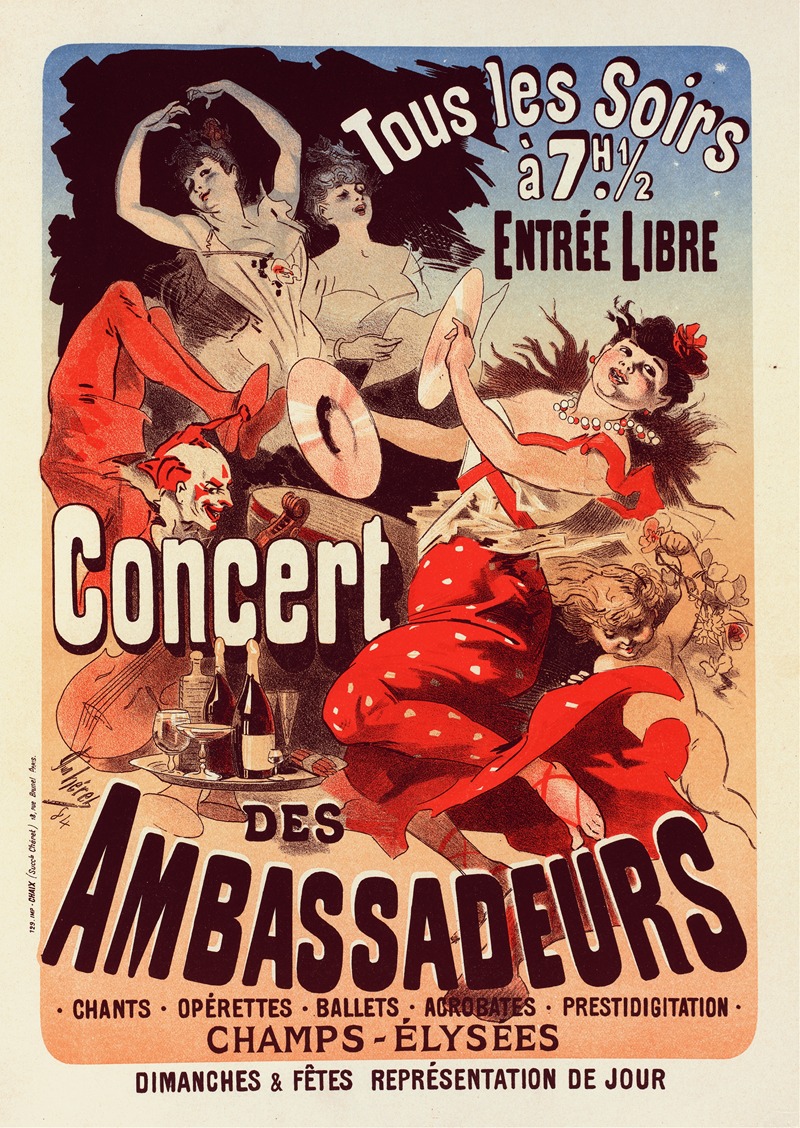
Concert Des Ambassadeurs
A hand-painted replica of Jules Chéret’s masterpiece Concert Des Ambassadeurs, meticulously crafted by professional artists to capture the true essence of the original. Each piece is created with museum-quality canvas and rare mineral pigments, carefully painted by experienced artists with delicate brushstrokes and rich, layered colors to perfectly recreate the texture of the original artwork. Unlike machine-printed reproductions, this hand-painted version brings the painting to life, infused with the artist’s emotions and skill in every stroke. Whether for personal collection or home decoration, it instantly elevates the artistic atmosphere of any space.
Jules Chéret, often referred to as the "father of the modern poster," was a French artist and lithographer renowned for his vibrant and innovative advertising posters during the late 19th century. One of his notable works, Concert des Ambassadeurs, exemplifies his mastery of the lithographic medium and his ability to capture the dynamic energy of Parisian nightlife.
Created in 1884, Concert des Ambassadeurs was designed as a promotional poster for the Café-Concert des Ambassadeurs, a popular open-air entertainment venue located on the Champs-Élysées in Paris. The venue was known for its lively performances, featuring singers, musicians, and other entertainers who drew large crowds from the city's diverse social classes. Chéret's poster effectively encapsulates the spirit of this vibrant cultural scene.
The artwork features a central female figure, a hallmark of Chéret's style, who is depicted in a swirling, dynamic pose. She is dressed in a flowing, brightly colored gown, her movements suggesting the rhythm and liveliness of the music performed at the venue. Surrounding her are other figures, including musicians and audience members, rendered in Chéret's characteristic loose and expressive lines. The composition is animated and celebratory, reflecting the joyous atmosphere of the café-concert.
Chéret's use of color in Concert des Ambassadeurs is particularly striking. He employed a palette of bold, contrasting hues, including reds, yellows, and blues, which were made possible by advancements in chromolithography. This technique allowed for the production of posters with vivid, eye-catching colors that could attract attention from passersby on the bustling streets of Paris. The interplay of light and shadow in the poster further enhances its sense of depth and movement.
As with many of Chéret's works, Concert des Ambassadeurs was not only a piece of commercial art but also a reflection of the cultural and social dynamics of Belle Époque Paris. His posters celebrated the city's burgeoning entertainment industry and its embrace of modernity, while also elevating the status of advertising art to a legitimate form of artistic expression.
Today, Concert des Ambassadeurs is considered a classic example of Chéret's contribution to the development of the modern poster. It is frequently studied and exhibited as part of the broader history of graphic design and visual culture. The poster remains a testament to Chéret's ability to merge art and commerce, creating works that are both functional and aesthetically compelling.





